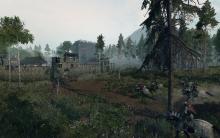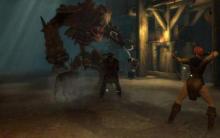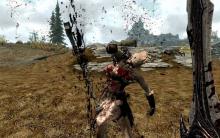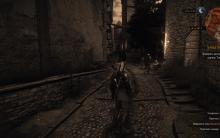Poland is located in the very geographical center of Europe, but more often it is referred to as a region of Eastern Europe. It is the 9th largest state in this part of the world and 69th in the world. In recent centuries, its borders have constantly changed, at the moment the country stretches for 720 km from south to north and the same distance from west to east. A detailed map of Poland shows that from the north it is washed by the waters of the Baltic Sea, but does not have large island territories, with the exception of the islands of Wolin and Carsibur, located at the mouth of the Odra.
Poland on the world map: geography, nature and climate

The length of Poland's borders is relatively small - 3528 km, but the country's key location in the region places Poland on the world map between seven neighbors. In the northeast, Poland borders on Russia (through the Kaliningrad region) and Lithuania on a small stretch of the border. The country's neighbor from the east is Belarus, from the southeast - Ukraine and Slovakia. Due to the significant brokenness of the borders, Poland has the longest border section with the Czech Republic - 796 km. From the west, the country borders on Germany. The coastline of the country is quite flat and stretches for 770 km.
Geographical position
Despite the relatively small area (312685 km 2), the country's territory is quite diverse. The northern and central part of Poland is located on the so-called Polish Lowland, which is a continuation of the North German Plain. The relief in this region was formed by glaciers during the last glaciation. To the south, low hills and plateaus (up to 60 meters) begin.
The southern borders of the country pass through two large mountain ranges. On the Czech border are located Sudetenland, whose highest point reaches 1603 meters. And the border regions with Slovakia and Ukraine lie in the northern tip of the Carpathian Mountains. Here is the highest point of the country - the northern top of Rysy mountain(2499 m). It is worth noting that the main peak of the mountain is 4 meters higher and is already in Slovakia. In general, only about 9% of the country's territory is located above 300 meters above sea level.
Poland is one of the most forested regions in Europe. About a quarter of the country's area is occupied by forests. The soils of the Polish lowlands are mostly infertile, but up to 40% of the land is used in agriculture.
The water basin of the region is abundant. The largest rivers in Poland - Vistula And Audra. Most of the country's rivers are their tributaries. The region also abounds in small lakes, the largest of which belong to the Masurian Lakes. On the map of Poland in Russian, you can find the largest of them - Sniardwy. But even it does not exceed 113 km 2 in area.
Animal and plant world
The flora and fauna of the country is typical for the north of Europe and cannot boast of a large number of endemic species. The forest area of Poland is represented by mixed forests. The main plant species are: pine, birch, beech, oak, spruce, poplar and maple.
The fauna of the country is quite poor for the European region. Deer, elks, bears and wild boars are found in the local forests. Chamois live in mountainous regions. In the lands bordering Belarus, one can observe a resurgent population of European bison. The most common bird species are capercaillie, black grouse and partridge. The coastal waters of the country are rich in commercial fish species, for example, herring and cod.
Climate
Most of the country is located in the temperate zone - from maritime in the north to continental in the south. Average winter temperatures range from -2 to -6°C. Summer is also not hot - 17-20°C.
In mountainous regions, the temperature is on average 5 degrees lower. The amount of precipitation in the flat regions is 500-600 mm per year. In the mountainous south, this figure is higher - more than 1000 mm. In the High Tatras, up to 2000 mm of precipitation falls annually.
Map of Poland with cities. Administrative division of the country

Poland has its own administrative unit - voivodeship. The whole country is divided into 16 provinces. A map of Poland with cities in Russian allows you to see that the population density in the south of the country is slightly higher than in the north, but on average it is 123 people per km 2.
Warsaw
Warsaw is the capital and largest city of the state. It is located in the eastern part of the country. A major cultural and economic center of the region. The most prestigious educational institutions of the country are concentrated here - about a third of the city's population are students.
Krakow
Krakow is the historical center and the second largest and most important city in Poland. Located in the south of the country. It is the most popular tourist destination in the region. Due to the abundance of architectural monuments, Krakow is included in the UNESCO World Heritage List.
Katowice
Katowice is located 70 km west of Krakow. The city is the center of the Silesian agglomeration. It is the most economically active city in the country, a center of trade and heavy industry.
The Republic of Poland is a state located in Eastern Europe. A satellite map of Poland shows that the country borders on Germany, Belarus, Lithuania, Slovakia, Ukraine, the Czech Republic and Russia (along the border of the Kaliningrad region). In the north, the state is washed by the Baltic Sea. The area of the country is 312,679 sq. km.
Poland is divided into 16 provinces. The largest cities in the country are Warsaw (capital), Krakow, Lodz, Wroclaw and Poznan. The economy of the state is based on manufacturing and agriculture. Today, Poland is considered an industrial-agrarian country with an economy that is interesting for investors.
The official language is the Polish language, and the national currency is the Polish zloty.
Marienburg Castle in Malbork (the largest brick castle in Europe)
Brief history of Poland
966 - the date of foundation of the Polish state: Mieszko I converted to Christianity;
1025 - creation of the Polish kingdom;
1385 - the Polish-Lithuanian union was signed;
1569 - creation of the Commonwealth (unification of the Polish state with the Grand Duchy of Lithuania);
1772-1795 - three divisions of Poland between Russia, Austria and Prussia, as a result of which Poland ceases to exist as a state;
1815-1918 - the Kingdom of Poland is part of Russia;

Tatra mountains
1918 - Poland regains statehood and independence;
1939 - the territory of the country is divided between the USSR and Germany;
1939-1945 - A general government was created on the German territory of Poland;
1945-1989 - Polish People's Republic, dependent on the USSR;
1989 - creation of the third Republic of Poland;
1999 - the country joined NATO;
2004 - became a member of the EU;
2007 - signed the Schengen Agreement;
2010 - the plane of Polish President Lech Kaczynski crashed near Smolensk.

Lake Morskie Oko
Sights of Poland
On a detailed map of Poland from a satellite, you can see some of the sights of the country: the Tatra Mountains (part of the Carpathians), the Masurian Lake District (a plateau with lakes), the Slowinski National Park, the Bieszczady Mountains, Morskie Oko Lake and the Belovezhskaya Pushcha Reserve.
In Krakow, it is worth visiting the Wawel Castle, the "Old" Town, St. Mary's Church, the Cathedral of St. Stanislaus and Wenceslas, and the oldest part of the Jagiellonian University (Collegium Maius).

Gateway to Auschwitz concentration camp
In Warsaw, it is worth seeing the Royal Palace, the Palace of Culture and Science, the Wilanów and Lazienkow Palaces and the Jewish Cemetery. In Gdansk, it is worth looking at the Church of the Virgin Mary and the Westerplatte peninsula, in Wroclaw - at the town hall and the Church of St. Mary Magdalene.
Among the sights of Poland, it is worth highlighting the city of Malbork (Marienburg), the Wieliczka salt mine, the Jasna Gora Monastery in Częstochowa, the Oliva Cathedral in Olivia, the Ksionzh (Fürstenstein) castle near Walbrzych and the museum of the Auschwitz-Birkenau concentration camp (Oswiecim).
In Poland, there are also numerous resorts: ski, climatic and balneological. The most famous spa towns are Zakopane, Augustow, Dombruvno, Ustron, etc.
Note to the tourist
Gulrypsh - holiday destination for celebrities
There is an urban-type settlement Gulrypsh on the Black Sea coast of Abkhazia, the appearance of which is closely connected with the name of the Russian philanthropist Nikolai Nikolaevich Smetsky. In 1989, due to the illness of his wife, they needed to change the climate. Case decided the case.Poland is a country that miraculously combines centuries-old traditions and culture with the ever-accelerating rhythm of modern European society. The magnificent nature, lakes and mountains attract more and more tourists from all over the world with their beauty.
Lovers of a measured rural life will be pleasantly surprised by the large selection of villages offering relaxation in a relaxed homely atmosphere. In addition, it is in the village that you can get to know the traditions of the country more closely by taking part in various festivals and fairs, which are far from uncommon here.
Admirers of natural beauty will discover amazing natural treasures, because twenty-two natural national parks have been created in Poland!
For lovers of a more active holiday, such large cities as Warsaw, Krakow, Wroclaw and Torun are suitable, where life does not cease to boil even after dark.
Poland on the world map
Below is an interactive map of Poland in Russian from Google. You can move the map to the right and left, up and down with the mouse, as well as change the scale of the map with the "+" and "-" icons, which are located at the bottom right side of the map, or with the mouse wheel. In order to find out where Poland is located on the world map or on the map of Europe, zoom out the map even further in the same way.
In addition to the map with the names of the objects, you can view Poland from a satellite if you click on the "Show satellite map" switch in the lower left corner of the map.
Below is another map of Poland. To see the map in full size, click on it and it will open in a new window. You can also print it out and take it with you on the go.

You were presented with the most basic and detailed maps of Poland, which you can always use to search for an object of interest to you or for any other purpose. Happy travels!
The Republic of Poland is a Baltic state located in the center of Europe. The northern part of the state goes to the Baltic coast. In the northeast, Poland has a land border with Russia and Lithuania. The Bug, the most abundant tributary of the main river of Poland, is a fairly long eastern border of the country on the border with Belarus and Ukraine. The land border between Poland and Ukraine passes through the Ukrainian Carpathians. Slovakia and the Czech Republic are countries with which Poland has a southern mountainous border that runs along the Sudeten and Carpathian ranges. In the West, the state borders on Germany along the Oder and Neisse rivers.
The largest water arteries in Poland are the Vistula, Oder, their tributaries and cross the country from south to north. In a relatively small area in the south, there is a flow of water into the Danube and the Dniester, in the northeast - into the Neman. The length of the state, which occupies the 9th largest place in Europe, from north to south is 649 km, from east to west - 689 km. The total area of the country is 312,683 sq. km.

The highest point - 2444 m, Mount Rysy, is located in the Polish part of the Carpathians. The lowest point - 1.8 m below sea level, is located west of the village of Raczki-Elblagske.












Forgotten Legend: The Legend of Dragoon Legend of dragoon walkthrough
Clock Tower - time of fear Clock tower game series
Skyrim: cheat codes for weapons, skills, armor and enchantments
Google maps online Google maps in Russian
Distance measurement on Yandex